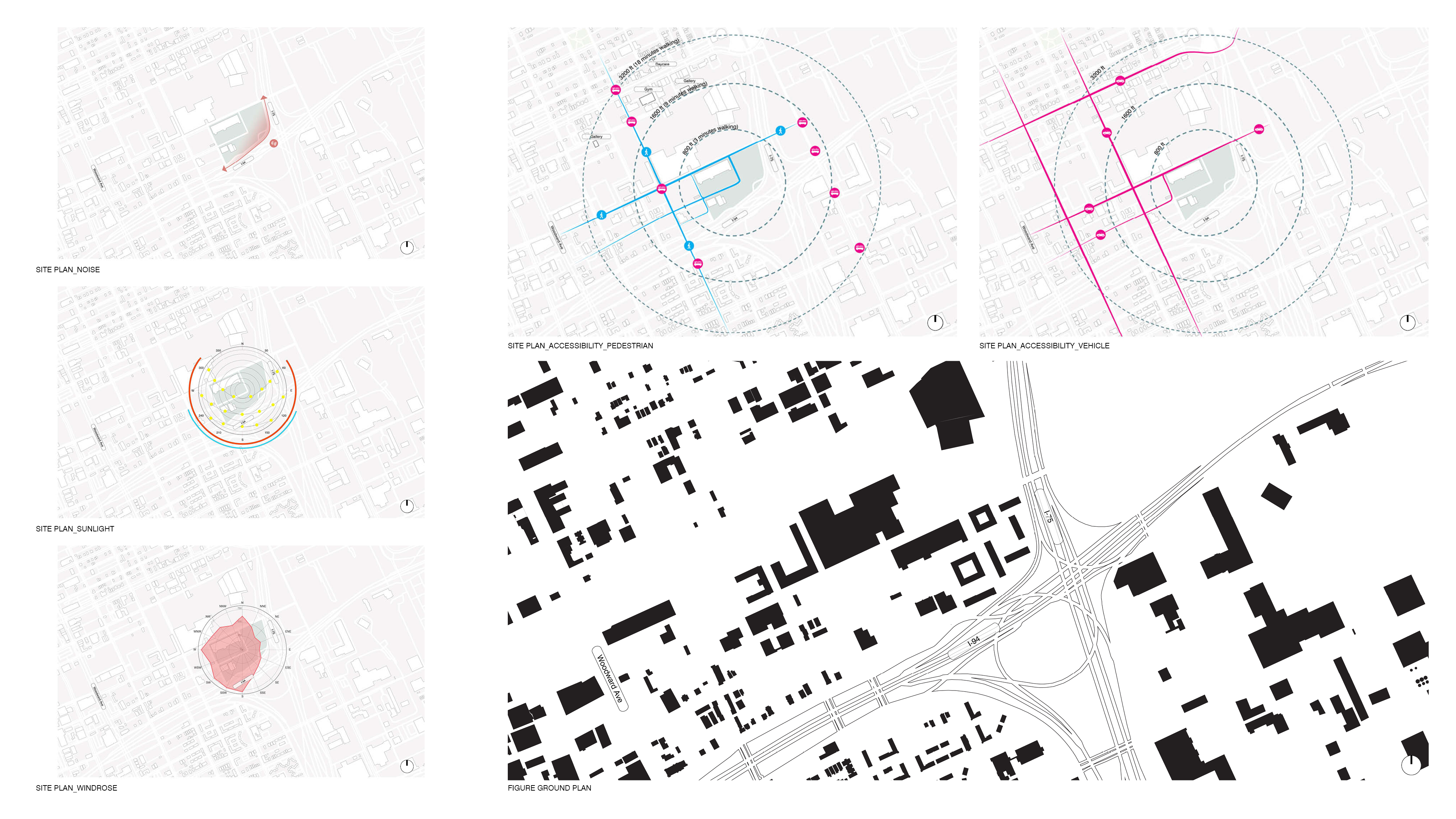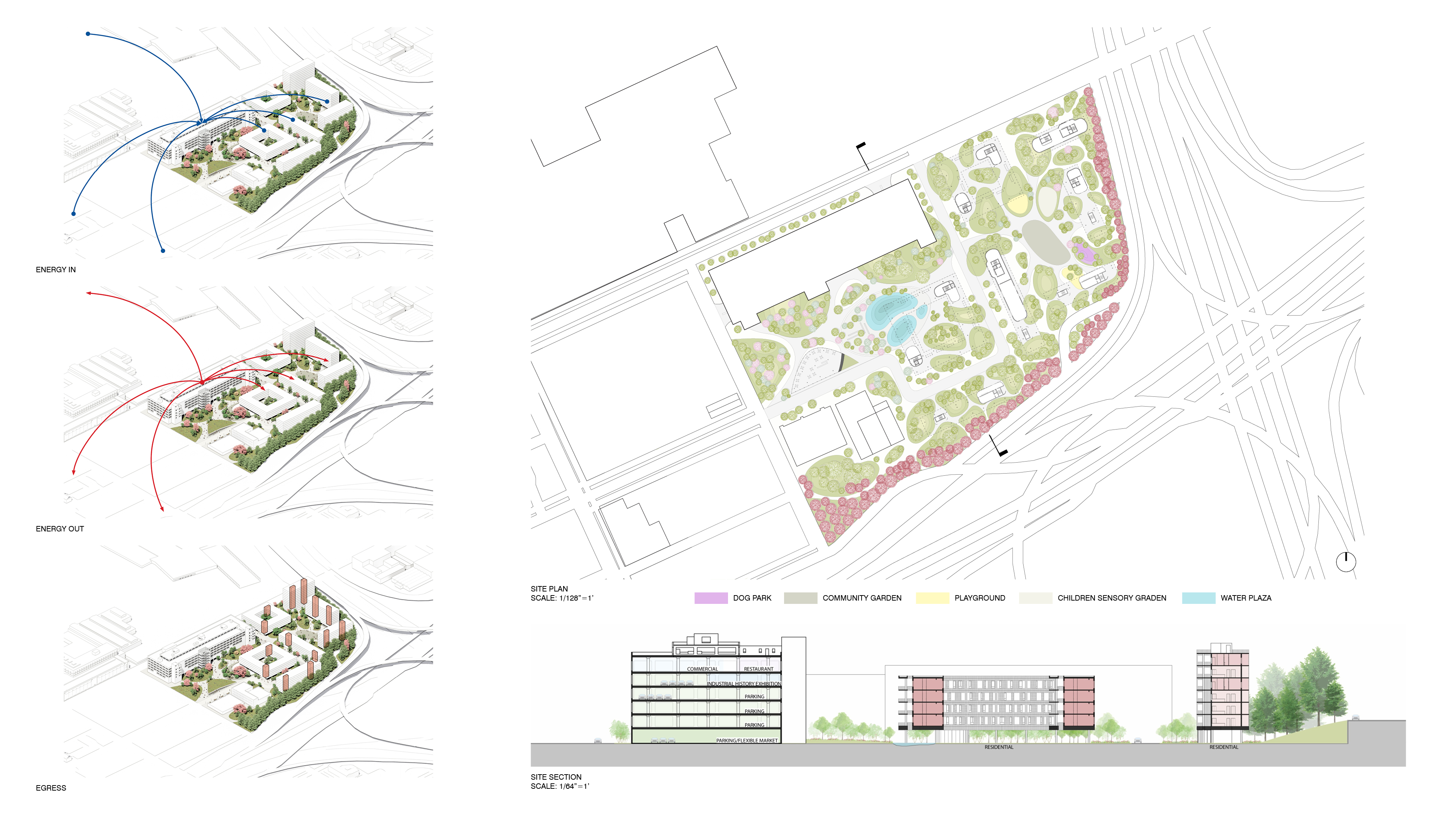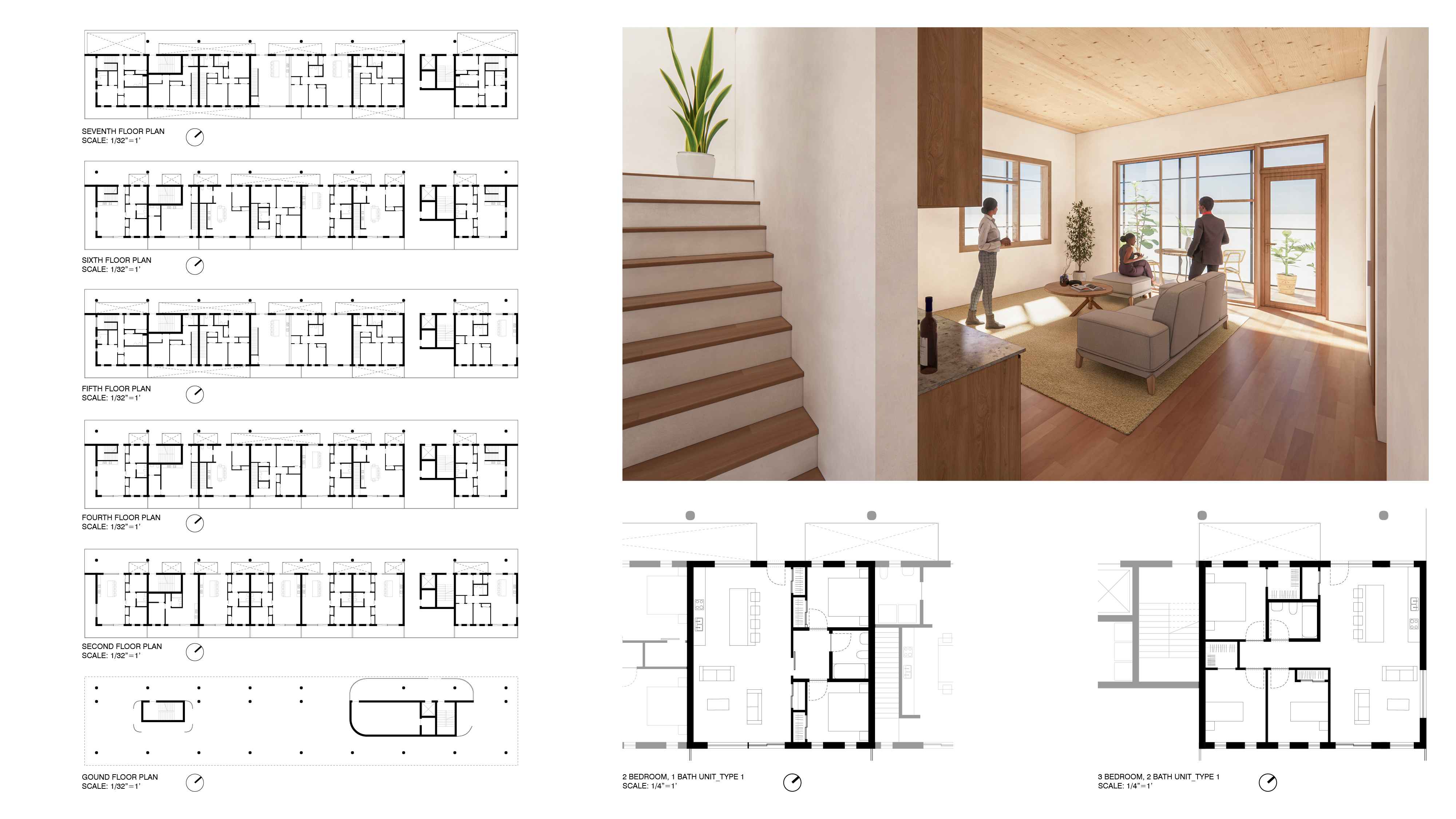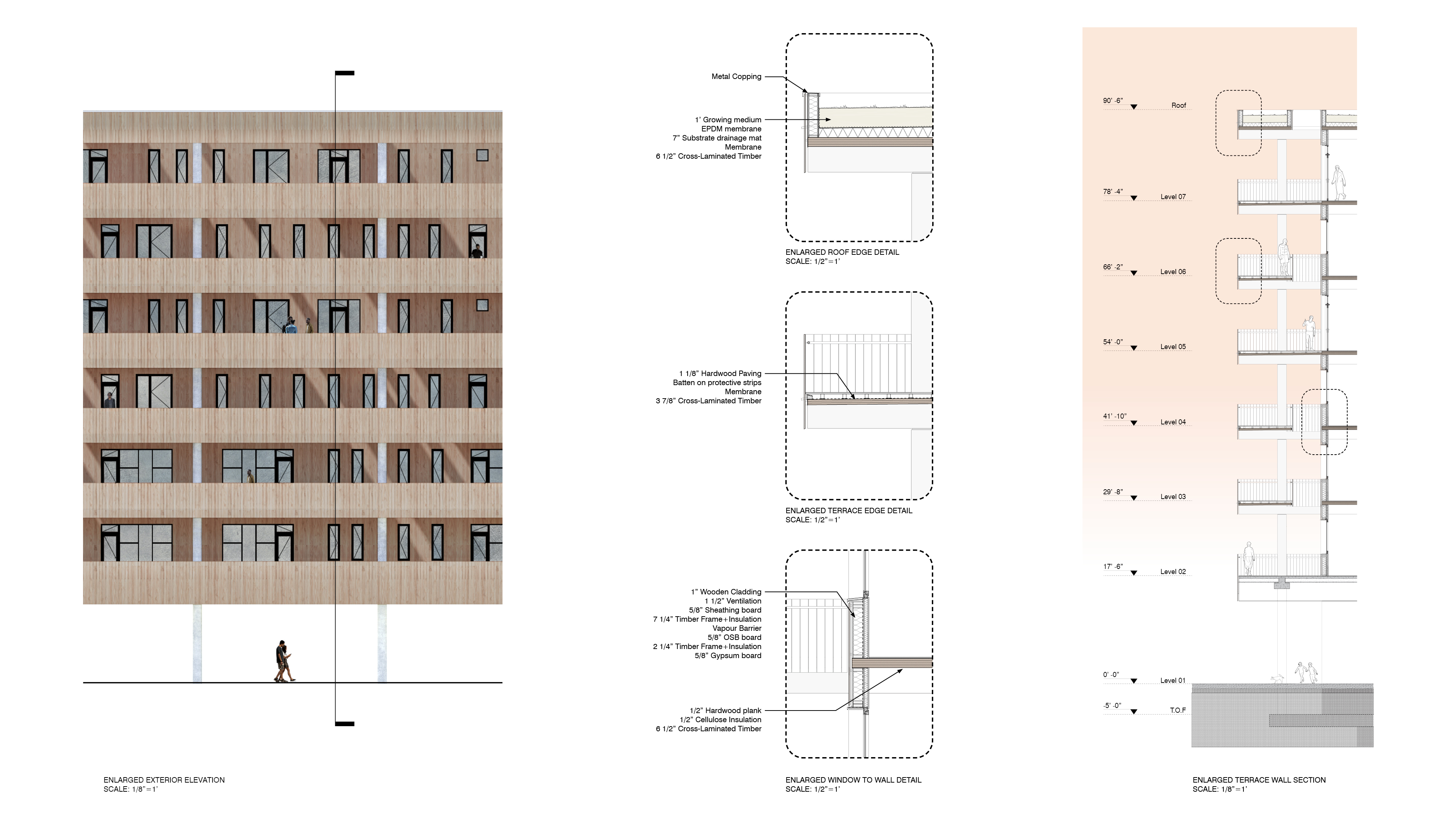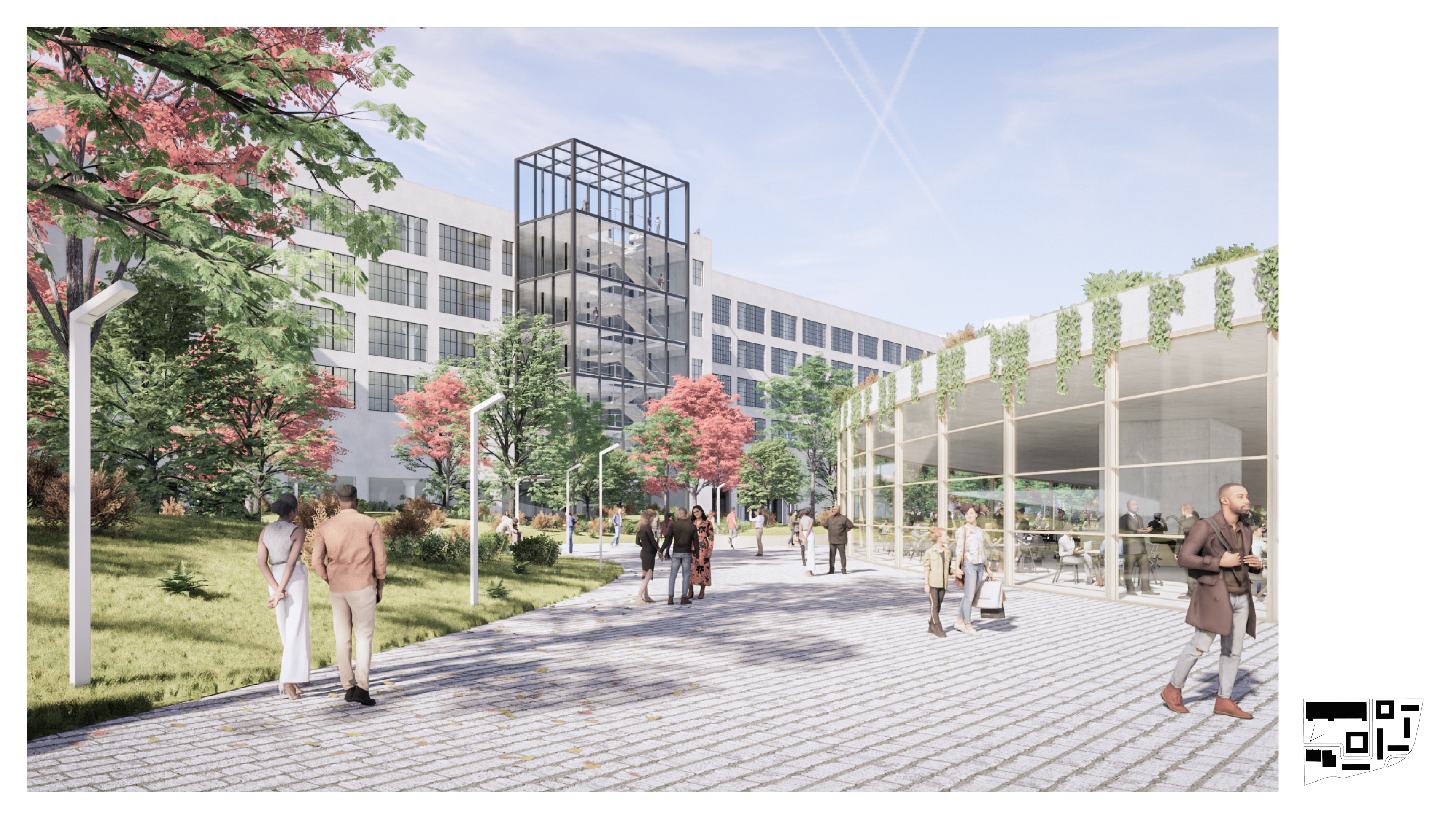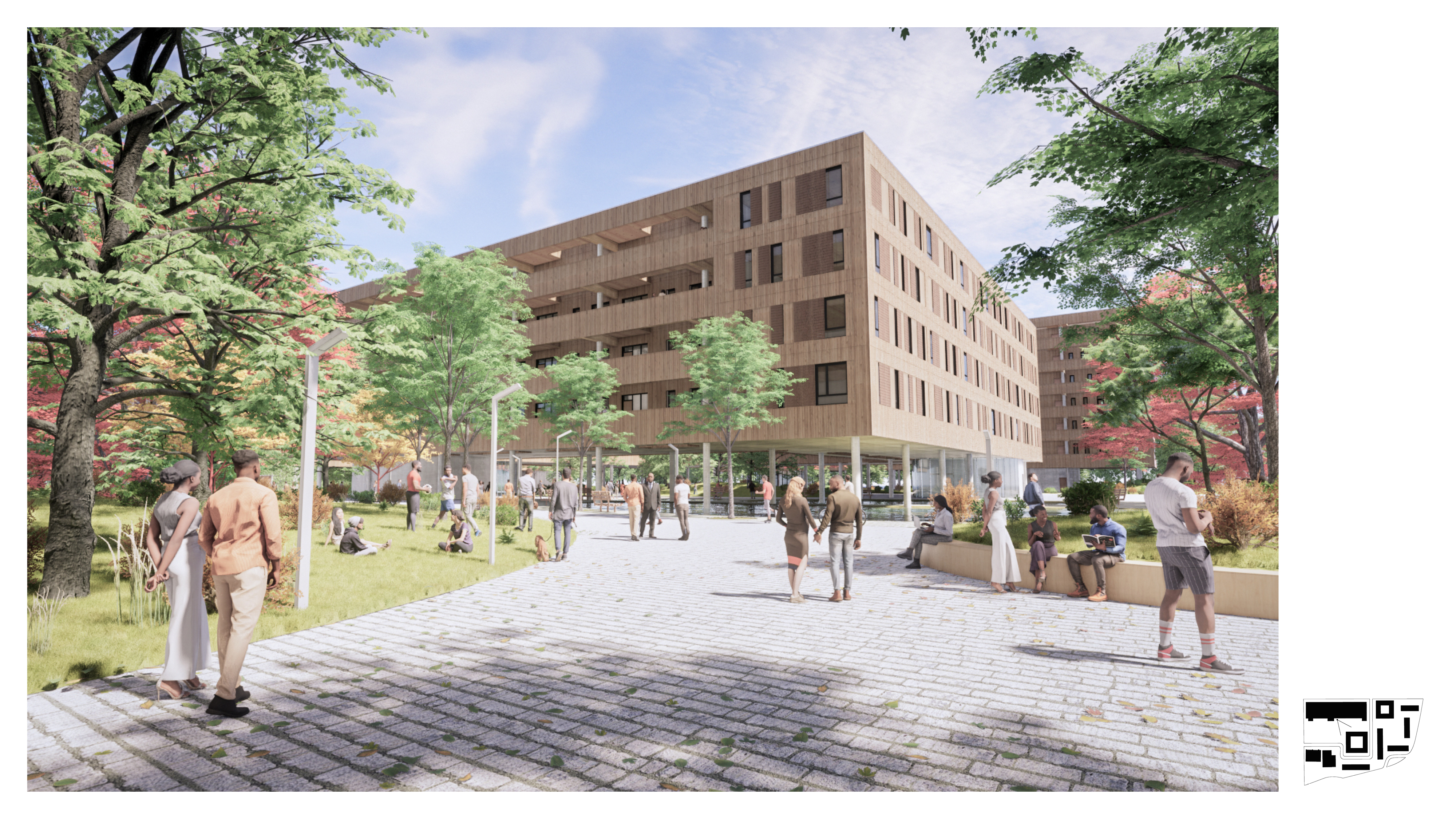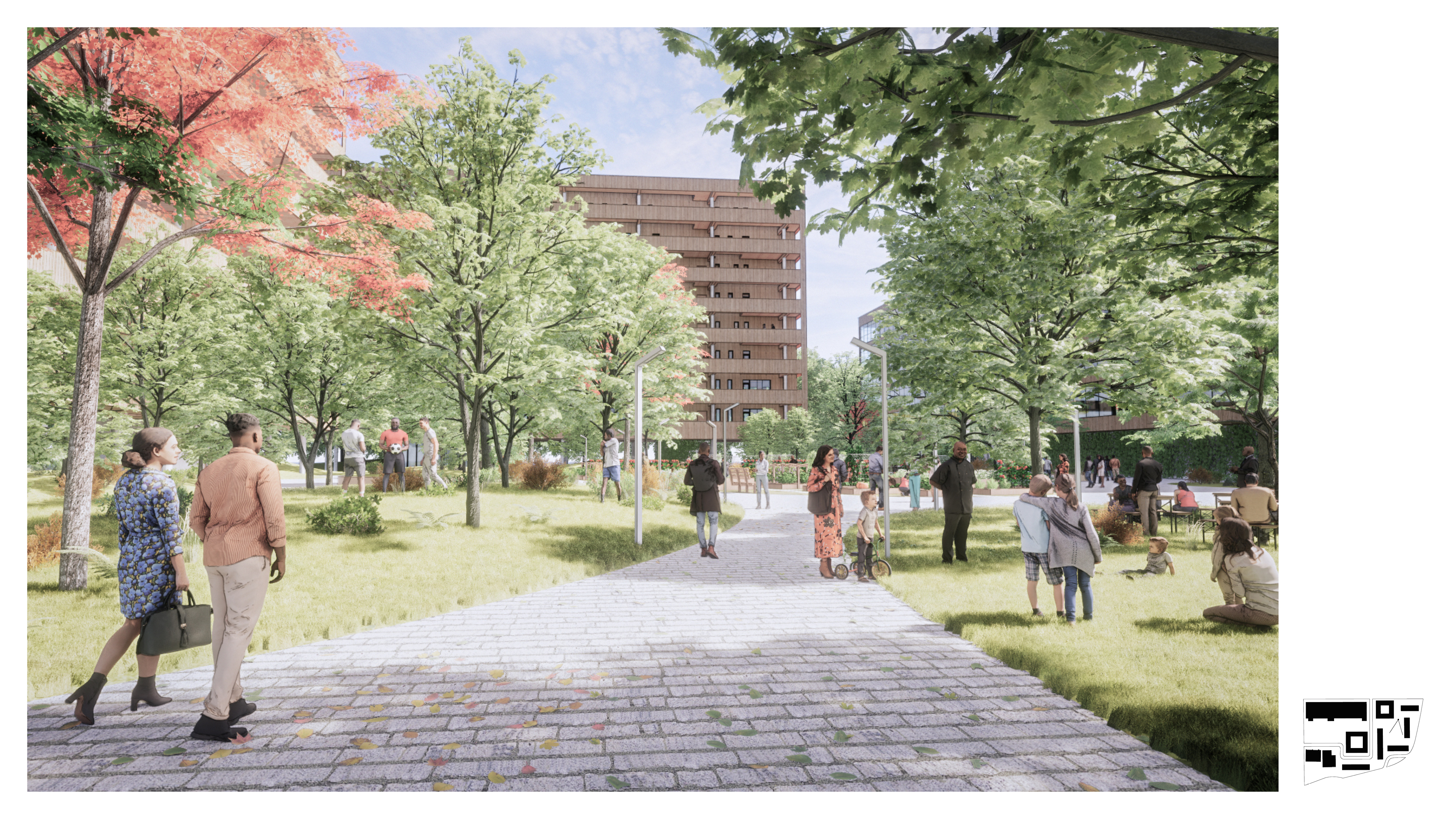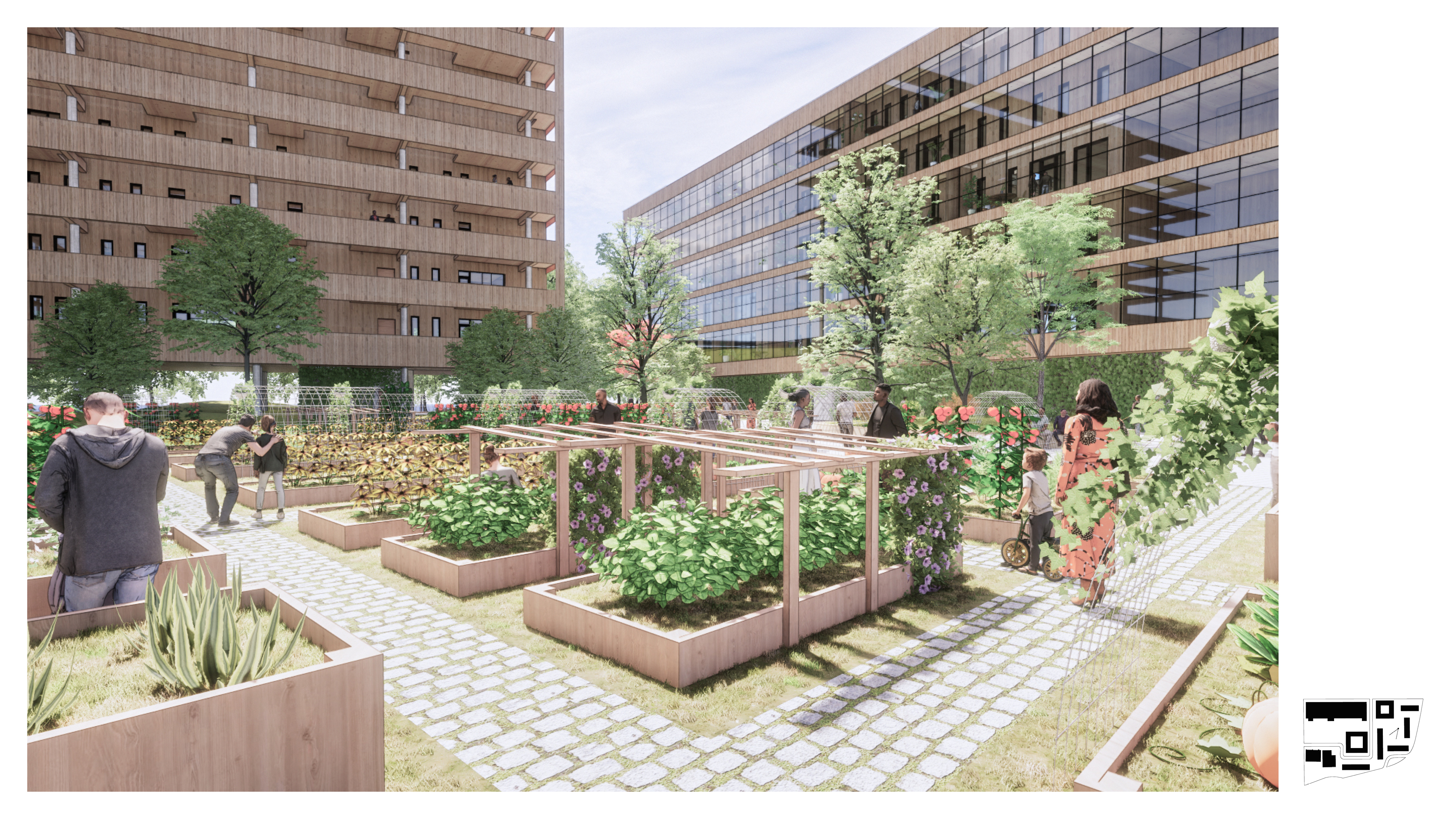PROFESSORS
LARS GRÄBNER + CHRISTINA HANSEN
STUDIO SECTION
TIC TAC TOE
Detroit experiences an unparalleled demand for housing, especially adequate accommodations for changing economic realities and that for an increasingly diverse population. Only new forms of housing design and planning tools can address the changing demands of how we want to live.
Current living conditions are often challenged by inflexible and non-adaptive economic principles, traditional marketing schemes, outdated masterplans, and inadequate zoning regulations.
The Tic Tac Toe studio investigated the urban conditions through the lenses of how we live in the urban context - from the unit to the street to the neighborhood. Demographic changes, new ways of working and living, and a desire for more active and cultural urban space requires differentiated and inclusive approaches to the planning and design of contemporary housing.
This studio offered the opportunity to develop and test alternative concepts for housing through the creation of environments that question normative urban routines and housing typologies.
Student teams of three explicitly explored how novel programmatic urban elements and their aggregations may contribute to vibrant and resilient housing qualities.
The ten-acre site around the historic Fisher Body Plant #21 in Detroit resembled an ideal testing ground for urban, architectural and social interdependencies in a larger scale.
︎︎︎BACK ︎
ELLIE ABRONS + MEREDITH MILLER
Austin Ehrhardt, Elizabeth Greene, Ye Wang
Zoë Faylor, Rosa Manzo, Anne Redmond
CRAIG BORUM + CLAUDIA WIGGER
Chun-Li (Julie) Chen, Megan Clevenger, Amber Klinger
Yuanyuan Cui, Danielle Weitzman, Jasmine Wright
LARS GRÄBNER + CHRISTINA HANSEN
Kayla Hawley, Kunshi Liu
Renwei Liu, Lu Li, Elizabeth Sinawe, Yujia Wang
KIT MCCULLOUGH + MICK KENNEDY
Jie Feng, Yuxin Ma, Joy Zou
Noelle Ridley, Sang Won Jee, Kael Finehout
STUDENT WORK
KAYLA HAWLEY,
KUNSHI LIU
“CITY FOREST”
City Forest offers a unique, nature influenced living development in a site that is surrounded by traffic, industrial buildings, and partial seclusion from downtown. It acknowledges that the surrounding area is lacking green space and commercial businesses, and it aims to bring life back into this location that once housed a beautiful, operating plant. The project intends to restore the Fisher Body Plant 21, adding essential commercial and culural programs , and honoring its former purpose through an permanent exhibition focused on Detroit's industrial history. The Project Goals consist of: Sustainability, Social Interaction, Multi-Family Lifestyles, Community Development, and Private vs. Public Spaces.
